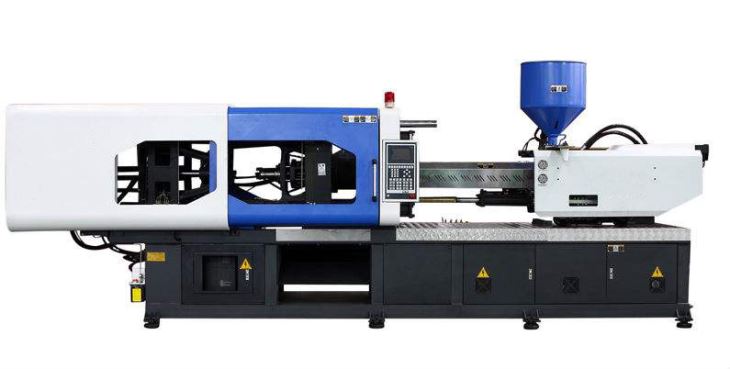blob-article

Plastic recycling has become one of the most Primary cornerstones for environmental Eco-friendliness since it addresses the rising concerns of plastic waste and its impact on the planet. Injection machines in plastic play a needed role in this respect, because they transform reprocessing plastic materials into new, workable, functional products. This blog deals with the importance of injection moulding machines in plastic reprocess, including the process, functionality, and variation of horizontal and vertical configurations.
Understanding of Injection Moulding Machines
Plastic injection machines are key machinery in the manufacturing of plastic items. These machines inject melted plastic into a mould where it solid as the plastic cools into many given shapes. With the ability to produce the most diverse range of items from small precision components to large containers, the technology can be regarded as unparalleled. The reprocessing of used plastic materials is achieved through these machines in the realm of plastic recycling. It also saves virgin plastics, while providing for effective waste management. By converting plastic waste into valuable products, Plastic injection machines make huge contributions to the circular economy.
Horizontal and Vertical of Injection Moulding Machines-
- Horizontal Injection Moulding Machines: The most commonly used type, horizontal machines control with a horizontal mould opening and closing mechanism. They are ideal for high-volume production of consistent and symmetrical parts.
- Vertical Injection Moulding Machines: These machines work as a vertical layout, with the mould opening and closing vertically. They are well-shaped for insert moulding, where materials like metals or other parts are enclosed within the plastic during the moulding process.
How Injection Moulding Machines Work?
Key Components and Setup:
-
The machine consists of a rotating screw, a barrel with heaters, a hopper for raw materials, and a mould with two halves (fixed and movable).
-
The mould halves are aligned on tie bars and form a sealed cavity when closed.
Material Feeding:
-
Raw plastic material is stored in a hopper and fed into the heated barrel.
Melting the Plastic:
-
Heaters surrounding the barrel melt the plastic.
-
A rotating screw inside the barrel mixes and propels the molten plastic forward.
Mould Clamping:
-
Hydraulic clamping systems securely close the mould halves to prepare for injection.
Injection Process:
-
The screw pushes the molten plastic through the spout into the mould gap.
-
The amount of material injected, called the shot volume, is carefully controlled based on conditions like pressure, time, and power.
Cooling and Solidification:
-
The molten plastic inside the mould cools and solidifies, often using water or air circulation.
Product Ejection:
-
Once solid, the mould opens, and ejector pins gently push the finished product out of the cavity.
Efficiency and Output:
-
The process is continuous, allowing production rates of 50–60 parts per hour, depending on product size and shot volume.
Key Steps in the Injection Molding Process
-
Feeding: Plastic resin pellets are loaded into the hopper at the top of the machine.
-
Melting: The plastic is conveyed by a rotating screw through a heated barrel where it melts into a liquid state.
-
Injection: The molten plastic is then injected under high pressure into the mold cavity through a nozzle.
-
Holding Pressure: The plastic is held under pressure within the mold cavity to ensure proper filing and prevent voids.
-
Cooling: The mold is cooled to allow the plastic to solidify and harden into the desired shape.
-
Mold Opening: Once the part is fully cooled, the mold opens to eject the finished plastic component.
Main Components of an Injection Molding Machine
-
Hopper: Stores the plastic resin pellets.
-
Barrel: Heated chamber where the plastic melts.
-
Screw: Rotating mechanism that pushes the plastic through the barrel
-
Nozzle: Injection point where the molten plastic enters the mold
-
Mold: The two-part metal tooling with the cavity that shapes the plastic part
-
Hydraulic System: Provides the power to operate the machine, including clamping the mold and injecting the plastic
Importance of Injection Moulding Machines
These machines are undeniably crucial in modern manufacturing and recycling processes. Their importance is highlighted by the following advantages:
-
Efficiency and Speed: These machines enable rapid production of complex plastic parts with high precision, reducing lead times and production costs.
-
Consistency in Quality: The ability to produce uniform parts with minimal variation ensures reliability, particularly for industries requiring precise components like aerospace or medical sectors.
-
Cost-Effectiveness: While the initial investment in injection moulding machines may be high, the cost per unit decreases significantly as production scales up.
-
Versatility: Capable of handling a wide variety of plastic materials, including recycled plastics, they support the creation of diverse products, from consumer goods to specialized industrial components.
-
Sustainability: With reduced waste generation and the ability to recycle excess material, moulding machines promote eco-friendly practices.
Benefits of Using Recycled Plastics for Injection Moulding Machines
-
Environmental Sustainability: Recycled plastics help conserve natural resources and reduce the energy requirements of virgin plastic production. For instance, recycled polyethylene from discarded bags can be repurposed to make storage containers.
-
Cost-Effective Material: Recycled plastics are more economical than virgin materials, allowing businesses to save on raw material costs.
-
Lower Energy Usage: Recycling plastics involves less energy-intensive processes compared to producing new plastics from raw materials, reducing overall carbon emissions.
-
Waste Reduction: By converting plastic waste into valuable products, moulding machines support waste management and circular economy initiatives.
-
Innovation in Design: The versatility of recycled plastics allows manufacturers to create hybrid materials with unique properties, enhancing the scope of product design and functionality.
Conclusion
Plastic injection machines are the cornerstones of changing the plastic recycling scenario. Their exact and efficient process allows for waste to be transformed into valuable, high-quality products that support environmental and economic sustainability. Reducing waste, from the enabling of innovative designs to more sustainable development, the function of such machines is vital for creating a circular economy. With this potential of moulding machines, industries can meet the demands of modern manufacturing and contribute to a more sustainable future.

